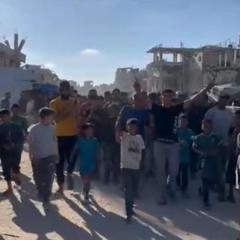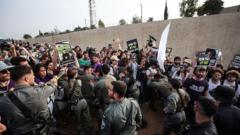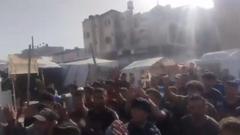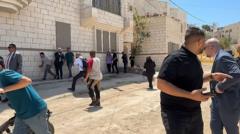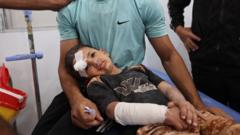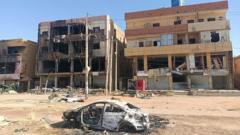Over 90 truckloads of humanitarian aid were distributed in Gaza after Israel lifted blockade restrictions, but UN officials caution that this is far from sufficient to meet urgent needs as hunger and malnutrition levels soar among the population.
UN Delivers Essential Aid to Gaza After Extended Delay Amid Ongoing Conflict
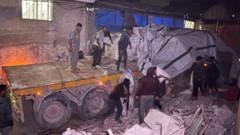
UN Delivers Essential Aid to Gaza After Extended Delay Amid Ongoing Conflict
Humanitarian aid reaches Gaza following a three-day hold-up, but experts warn of dire food shortages and escalating humanitarian needs.
In a significant development, the United Nations reported that more than 90 trucks carrying essential humanitarian aid have entered the Gaza Strip, three days after the Israel government alleviated a prolonged blockade. The aid shipment, which included crucial supplies such as flour, baby food, and medical equipment, was transported from the Kerem Shalom crossing on Wednesday night and subsequently moved to distribution centers within Gaza. Recent images depicted the use of flour for baking at a local bakery in Khan Younis, offering a glimpse of some positive outcomes amid the ongoing conflict.
"The assistance was delayed due to insecurity along the designated route approved by the Israeli military," a UN spokesperson confirmed. On the same day, Israeli authorities announced that an additional 100 trucks had crossed into Gaza. However, the United Nations emphasized that this amount remains inadequate to satisfy the enormous humanitarian needs of the population.
With around 2.1 million residents in Gaza, many humanitarian organizations have raised alarms about severe hunger levels, particularly among children, with a striking increase in acute malnutrition cases. A report from the UN-backed Integrated Food Security Phase Classification (IPC) warns that approximately half a million individuals may face starvation in the near future.
During a briefing, Antoine Renard, a senior official with the World Food Program (WFP), indicated that complications in the delivery process stemmed from the military's insistence on a risky route that aid agencies deemed hazardous—potentially exposing cargo to attacks from desperate civilians or bandits. "A single truckload of flour, trading at market value in Gaza, can reach up to $400,000 (£298,000)," Mr. Renard stated. He further explained that a sustained solution demands "hundreds of trucks daily" traveling safely to ensure adequate supply.
Aid agencies in the region cannot use armed escorts for their transport due to the dangerous environment, and as such, they urgently require an extended ceasefire and expanded opportunities for food transfer.
Following the resumption of hostilities after a two-month halt due to a prior ceasefire with Hamas, Israel had fully stopped deliveries of essential goods into Gaza on March 2. According to Israeli officials, these measures aimed to pressure Hamas into releasing hostages. They assert there is no shortage of aid, accusing the armed group of siphoning supplies for their own interests—a claim Hamas vigorously denies.
In a new attack on humanitarian protocols, Israeli Prime Minister Benjamin Netanyahu announced plans for aid distribution involving private contractors, sidestepping the existing UN frameworks. He claimed this would provide the military with "additional tools" for managing the ongoing operations.
However, agencies like the UN and WFP have rejected this approach, stressing it undermines humanitarian principles. "This plan isn't a solution but a political strategy,” Renard asserted. “Food should flow to the people, not the other way around.”
As military actions persist across Gaza, marked by an alarming rate of civilian casualties and escalating displacements, the UN estimates that about 81% of the territory falls under Israeli evacuation orders or is established as militarized "no-go" zones. Since the outbreak of conflict post-Hamas's cross-border attack on October 7, 2023, which caused significant fatalities and numerous hostages, the situation has rapidly deteriorated, with reports indicating high casualties among Gaza's civilian population.




